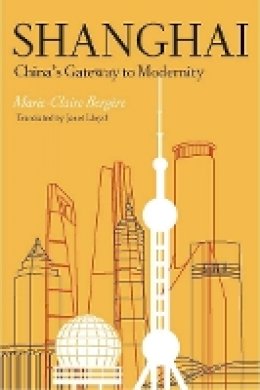
Shanghai: China´s Gateway to Modernity
Marie-Claire Bergère
Shanghai today is a thriving, bustling metropolis. But does its avid pursuit of the modern trappings of success truly indicate that it will once again become the shining example of China's commercial and cosmopolitan culture? While history continues to unfold, eminent China scholar Marie-Claire Bergère takes readers back to when Shanghai first opened to the world in 1842 to narrate the city's tumultuous and unique course to the present.
Shanghai: China's Gateway to Modernity is the first comprehensive history of Shanghai in any Western language. Divided into four parts, Bergère details Shanghai's beginnings as a treaty port in the mid-nineteenth century; its capitalist boom following the 1911 Revolution; the fifteen years of economic and social decline initiated by the Japanese invasion in 1937, and attempts at resistance; and the city's disgraced years under Communism. Weaving together a range of archival documents and existing histories to create a global picture of Shanghai's past and present, Bergère shows that Shanghai's success was not fated, as some contend, by an evolutionary pattern set into motion long before the arrival of westerners. Rather, her account identifies the relationship between the Chinese and foreigners in Shanghai—their interaction, cooperation, and rivalry—as the driving force behind the creation of an original culture, a specific modernity, founded upon western contributions but adapted to the national Chinese culture.
Eclipsed for three decades by socialism, the wheels of the Shanghai spirit began to turn in the 1990s, when the reform movement took off anew. The city is again being referred to as a model for China's current modernization drive. Although it makes no claims to what will happen next, Bergère's Shanghai stands as a compelling and definitive profile of a city whose urban history continues to be redefined, retold, and resold.
Product Details
About Marie-Claire Bergère
Reviews for Shanghai: China´s Gateway to Modernity
